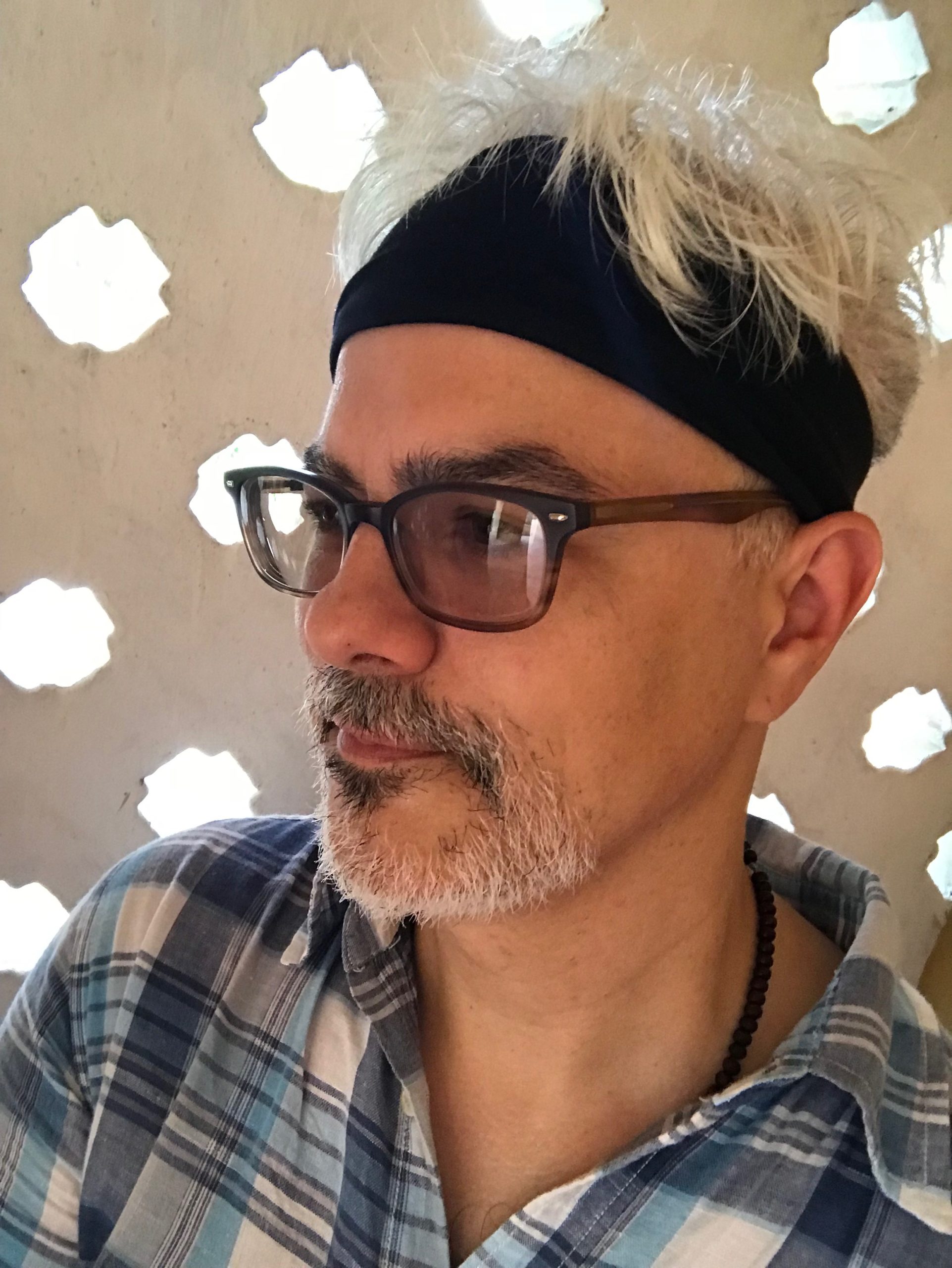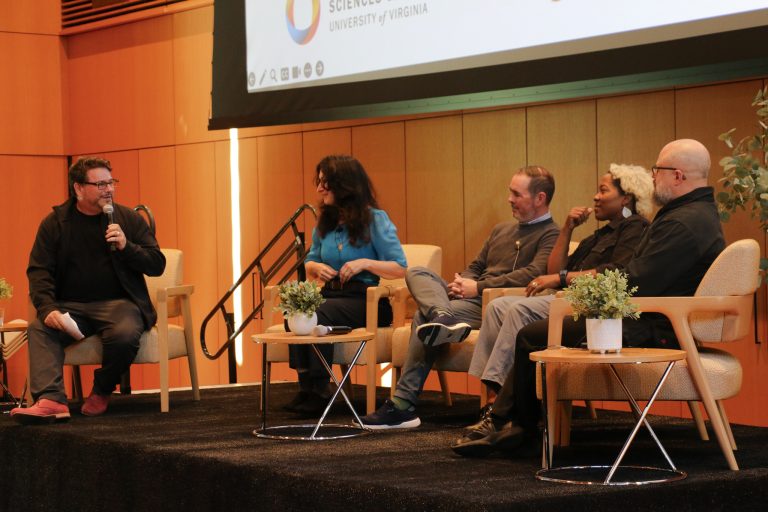JCS: I’m really curious how you came to this intersection of Contemplative Studies and Health. You’ve largely been studying Buddhist medicine, is that right? What brought you here? Either professionally, personally, or all of the above.
PS: I never felt like I fit into any discipline, from my college years up until the present, because I was always interested in an intersection between consciousness and health and religion and spirituality. In college I double majored in Anthropology and Cognitive Science. When I graduated from college, I went to Southeast Asia, and I lived in Thailand for about four and a half years. And it was there in Thailand that I was initially exposed to Buddhism. I had read about Buddhism before that, but there I was, actually participating in Buddhist meditation retreats, as well as spending some time in monasteries. At the same time, I was studying traditional Thai medicine with some formal traditional medicine schools and with some informal apprenticeships with practitioners. So I was pursuing both sides—contemplation and medicine.
But something really struck me in Thailand, and it was different from the reading I had been doing and from the way I had been trained to think about this from my schoolwork. I saw that the two were completely inseparable. I was at the monastery seeing people incorporating traditional medicine into the monastic lifestyle. And then I was at the traditional medicine schools, incorporating meditation and ritual into the healing practices. And so for me, my introduction to Buddhism from the beginning was not separate from medicine. Meditation and medicine were always intertwined within the tradition of Buddhism from the beginning, and so I became steeped in both, simultaneously.
And then eventually I came back to the U.S. and went into graduate school where, again, the idea was that you had to separate these two things, right? Because they’re two different disciplines and fields, and they have different methodologies and different ways of thinking. So, from the moment I came back into the academic study of these topics, I have been making the argument that these two are inseparable, and I have insisted on treating them as an intertwined unit in my scholarship. It just so happens that my PhD is in the History of Medicine. It could have been in Religious Studies, but I’ve always made the argument, when I speak to historians of medicine, how important it is to have religion, particularly Buddhism, as part of the picture of the History of Medicine. And when I speak to scholars of religion, I’m making the argument for how important it is to center health and medicine within Religious Studies. I straddle those two fields and try to bridge the two. It has everything to do with the way I was introduced to Buddhism, in a place where these two are completely intertwined.
I saw that the two were completely inseparable. I was at the monastery seeing people incorporating traditional medicine into the monastic lifestyle. And then I was at the traditional medicine schools, incorporating meditation and ritual into the healing practices.
JCS: I love that personal experience of seeing how those authentic, real communities keep these two intertwined, which in academia are two separate disciplines—and then how you bring back what you’ve seen to the field. And I’m curious: when you’re making these arguments to people in these fields, trying to bring them together, what’s at stake in that argument? What kind of impact, either in academia or in Buddhist communities, are you seeing from that?
PS: When I learned Buddhism in Thailand, it was always the case that meditation and medicine were intertwined. When I went back to graduate school, I pivoted to studying medieval China as opposed to contemporary China, and my PhD took a historical perspective, looking at, again, the intertwined inseparability of contemplation and religion and medicine in medieval China. In graduate school at UVA—this was before the existence of the Contemplative Sciences Center—there was already some conversation in the air about clinical research on the health benefits of meditation. This was right at the beginning of the “mindful revolution,” so-called, which has since become so high profile. For me, the resonance between meditation and health was just reinforced every step of the way.
In terms of impact, the most recent book I wrote on this subject, A Global History of Buddhism and Medicine, makes the argument that the meditation and health movement that we’re seeing in the 21st century is really the latest chapter in a millennia-long history of Buddhist ideas and engagements with health and healing. And if we understand what’s happening now in this larger historical and cross-cultural context, that it’s not just something we’re discovering for the first time in a clinical lab in the United States but that there’s actually this whole long tradition, with global scope, of the relationship between Buddhism and medicine—then I think it opens us up to a receptivity of a whole range of different practices for health and healing.
What we’ve really been focused on is such a narrow slice of this, in focusing only on mindfulness. It’s like it has sucked up so much of the oxygen that it’s even been difficult to study other forms of meditation. But there’s just so much more within the tradition that could be investigated, that should be prioritized, and I think could be really helpful for people to know about. So I think, whether for a researcher expanding a research agenda or a member of the general public, it’s about broader awareness of what health resources these traditions have to offer.
I should emphasize the fact that although I talk about Buddhist medicine, it’s not like there’s one coherent tradition that is shared by all Buddhist traditions everywhere in the world. Buddhist medicine is, I think, more of a field of inquiry. You might say it’s like Buddhist art. There are all kinds of traditions and all kinds of different practices that are included within the category of Buddhist art. It’s divergent from place to place. And yet, there’s still a shared core. So I approach Buddhist medicine like that. Medieval Chinese Buddhist medicine, or contemporary Thai medicine, or what’s being done in a mindfulness clinic, or what was being done in Japan in the 1940s or in Sri Lanka in the 9th century—all of that together is Buddhist medicine. And there’s just so much richness and so many practices and ideas that could potentially speak to the present day. I think it is valuable to understand it as this rich and diverse source of healing knowledge.
…the meditation and health movement that we’re seeing in the 21st century is really the latest chapter in a millennia-long history of Buddhist ideas and engagements with health and healing.
JCS: That’s really beautiful. And alarming that we really haven’t been attending to it in modern academia or in the health systems context. I’m curious what happens—both in a contemporary context of Western academia but also in a traditional context—when we bring these two things together? How do they inform each other?
PS: My impulse is to flip your question around and ask: What do we lose by separating them? Take the category of religion and the category of medicine: these are English words that derive from Latin roots, that have a European history in which they have been treated—not for all time, but at least for the last 500 years—as separate, even incommensurable, bodies of knowledge. Right? But that’s what just happened in Europe. So as English speakers and as members of the Western Academy, we have inherited these categories, and we think of them as if they are actually two completely separate spheres. But that is a product of our culture.
If we look elsewhere, whether it’s contemporary Thailand or medieval China or other places throughout history, one of the questions I have is: Did they separate these bodies of knowledge? And if so, how? And, what I’ve discovered by asking this question is that there definitely are times and places throughout Buddhist history where people wanted to cleave religion and medicine apart for whatever cultural, social purposes they had at that time. Early Pāli texts, for example, often make a clear distinction between the “transcendent” and the “worldly,” and prioritize the former over the latter. But in the majority of contexts, these spheres really seem to be an inseparable whole.
As a scholar of the humanities, it’s my duty to approach these texts from within the cultures in which they were written. If that is my obligation, then starting from the standpoint that medicine and religion are two different things is a bias before we even start to read. So, it’s about drawing out from the sources how people were thinking in this particular time and place, rather than imposing what I think onto them.
JCS: Yours is a really good reminder to listen to the traditions and how they are thinking about what we see as different categories, and the intersection—or not—between their categories and ours.
PS: Yes. I would say it’s an invitation. As modern people, in most parts of the world where this dichotomy between religion and science has been fully adopted—as people who have been brought up and taught to think within a society, within a culture in which there is this bifurcation—it’s easy for us to approach health in a very compartmentalized way. So, we think that things like the health, vitality, and physical resilience of the body belong to one category that we call the domain of medicine. And then there’s another category that includes things like experiencing the energetic qualities, the consciousness, or the interconnectivity of the body, which we say belong to the domain of religion. One domain can’t speak to the other because we’re constantly assuming they’re separate and they don’t even share a basic common vocabulary. And this can create a fracturing in our life, leading to a way of being in the world that can often be experienced as a separation, as a tension, as alienation, and as a dissatisfaction.
I would invite people to reflect on what it would be like if you didn’t have that bifurcation. If you didn’t have these separate categories in your mind a priori, and if you thought of health as something that included spirituality, and spirituality as something that included health. If you thought of religion as something that included medicine, and medicine as something that included religion, would you feel more integrated in some ways? Would you be able to appreciate more clearly the effects that the mind has on the body? Would you be able to understand the way that social or environmental factors impact both our spirituality and our health? I think it would produce a more integrated approach to some of these questions. And so, I’m advocating for a “trying on” of different cosmologies or different epistemologies or different ontologies—just experimenting with what benefits it may have in our lives, and whether thinking like this brings to light certain things that were hidden by the previous way of seeing.
JCS: I think it’s a really wonderful invitation—to reconsider a holistic view of humanity that combines how we view these experiences as different, and how we integrate them together, especially as we draw from historical traditions who may not have had that avocation. So, you’ve already kind of started to lean into this, but what is your vision for this intersection, or how we’re understanding these domains—which we have separated in the European Western tradition—as starting to come back together? What is your hope for that intersection and how we understand it and what we can do with it?
PS: I would like to propose that this is not just about Buddhist ideas about health, because I’m also interested in Chinese medicine, I’m interested in Indian medicine, I’m interested in Thai medicine, I’m interested in different Tibetan Medicine, and I’m interested in biomedical and scientific viewpoints. Each of these different traditions have different cosmologies, worldviews, epistemologies, and ontologies, different ways of understanding reality and how the human being works. And I’m not interested in boiling all of these down to one single hegemonic viewpoint. When you do that, you wind up having to prioritize one or the other. (Usually in our culture, it’s using biomedicine to explain all these other forms.)
I’m more interested in having—both as an individual but also as a global society—a diverse range of different understandings of health, understandings of the cosmos, understandings of consciousness, understandings of reality. I’m interested in having a diversity of options that are equally valued, and then being able as an individual to familiarize yourself with these different viewpoints. Being able to shift into alternative ways of seeing situations so that you have more conceptual tools to work with than just one kind of monolithic viewpoint that you’re always coming from.
I am getting that notion from my long term study of Buddhism. This kind of ontological and epistemological agnosticism is a kind of emptiness that fits well with Buddhist teachings. Buddhism has been inspirational for me, although I don’t identify as a Buddhist because I don’t take the whole tradition on. But that particular piece of it, philosophically, is quite useful. And, I do think that a lot of the conflicts and tensions and sticking points that we have in modern society have to do with people being dug into and stuck in one viewpoint and not having the cognitive flexibility to be able to see from another perspective, or to empathize and view reality through somebody else’s eyes.
I think one of the advantages that History, Anthropology, Religious Studies, and the humanities more generally can bring to the world is to translate these viewpoints and these worldviews across different languages, across different cultural contexts. We can bring to light: “How did a 6th-century Buddhist think about these same questions?” “How did a 17th-century yogi think about these questions?” “How does a spirit healer in rural Mongolia think about these questions?” We have the sources, we’re able to reconstruct those worldviews, and we’re able to contribute multiple different ways of seeing problems and engaging with these questions. I personally think the more the better.
I’m more interested in having—both as an individual but also as a global society—a diverse range of different understandings of health, understandings of the cosmos, understandings of consciousness, understandings of reality.
JCS: I love that. I think it really speaks to the power of the humanities. (Though, I almost hate to use that word now, right, because it’s reinforcing the kind of separation between the humanities and medicine that you’re trying to bridge!) Well, I’m sure our readers are going to want to think about all of this stuff more. What are some resources they can use?
PS: I would want to alert readers to a book series that I have, which is a two-volume anthology of translations from all over the Buddhist world, from ancient India to the present, highlighting all sorts of different ways that Buddhism and medicine have intersected throughout history. And the third book in that series is the book I mentioned earlier, A Global History of Buddhism and Medicine. It’s a sort of summary of all of that material, in addition to all of the research I’ve been doing, and the reading I have done of other people’s research over the last 20 years as I’ve been working in this field. This third book is an academic book, but it’s also written to be more accessible. So that series is one resource I would recommend. For people who are particularly interested in medieval China, Thailand, or the United States specifically, these are the three areas that I’ve focused on for my own primary research, so I also have a series of articles exploring different aspects of those cultural contexts.
Another thing I would recommend is my podcast series, Black Beryl, now in its third year, where we have monthly guests that come on to talk about their work in Buddhism, Asian medicine, and contemporary spirituality. I try to showcase scholars and practitioners who have a more expansive perspective and who bridge the scholar-practitioner divide. So we’re often focusing on the exact issues related to multiple perspectives we’ve been talking about here. And then, I’ve got blogs and video courses and other materials. If anybody is interested in following me and my work, my website is the best place to access everything: https://www.piercesalguero.com. I also have an email newsletter that you can sign up for if you want to get alerts for research and other things that I’m doing.
JCS: That’s great. And I’m definitely curious to check out that podcast for the flight home. Well, thanks so much for hanging out with me today.
PS: Thank you. Appreciate it!






